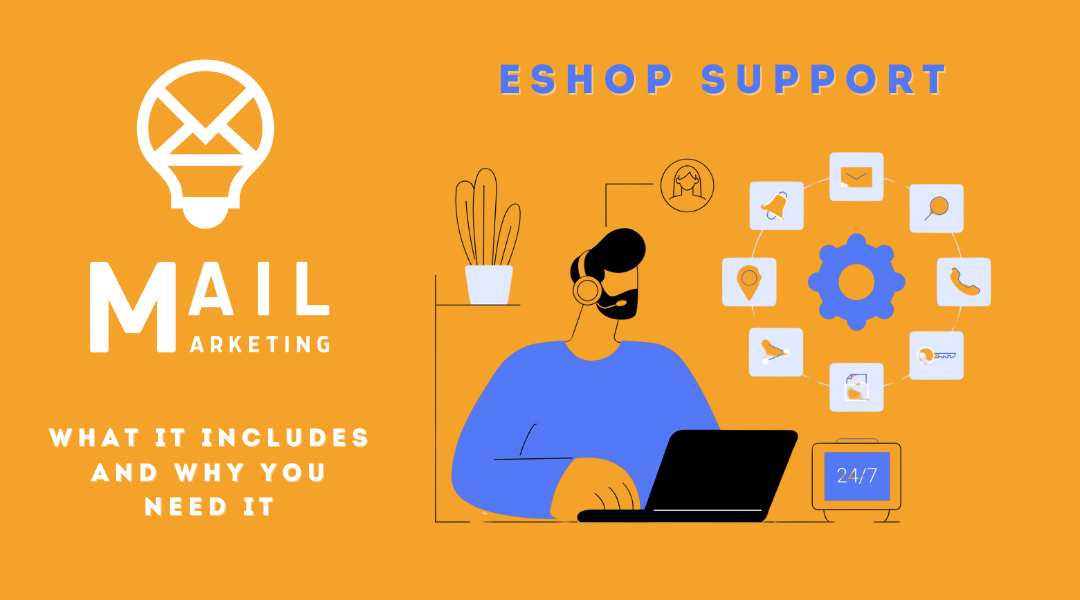What is email deliverability?
What will you learn
We’ll break down email deliverability, including steps you can take to build a strong sender reputation so your emails are delivered to your inbox and not your spam folder.
Email delivery and successful deliverability main folder. What's the difference?
Email deliverability is a nuanced concept and there are several factors that affect the likelihood of an email being successfully delivered. The 2 elements that allow an email to successfully land in a recipient’s inbox are email delivery in the email client and the ability to deliver email to the main folder and not spam.
Email delivery
By “email delivery” we mean the email being successfully delivered to a recipient’s mail server. A bounce occurs when an email is either not successfully delivered or is rejected by the recipient’s email provider.
Factors affecting delivery include:
- The validity of the recipient’s email address: Attempting to send a message to an address that does not exist will result in rejection. For this reason we always use the double opt-in method in our customers’ accounts (sending a confirmation link to the owner of the email)
- Temporary issues on the receiving server accepting incoming email: Temporary issues such as a recipient’s inbox being full or their email server being momentarily down can result in the message being rejected.
- Email authentication: Mail servers use authentication protocols such as SPF, DKIM, and DMARC to verify that incoming emails are from legitimate senders and can reject emails that fail. This process is very important and is always one of the steps we follow in setting up an affiliate account.
- Spam: Sending too many emails to a mail server in a short period of time can result in a bounce.
New to email deliverability? Check out the glossary to familiarize yourself with basic email marketing terminology.
Successful email delivery
Email deliverability refers to the successful delivery of an email to the correct destination. Good email deliverability allows your emails to land in your recipient’s primary inbox (including tabbed inboxes like Google’s Offers tab). Deliverability is best measured through events that indicate actual human interaction (eg opens, clicks, responses, promotions or conversions).
It is possible to have good email deliverability in general but poor actual deliverability if the majority of delivered messages do not reach the primary inbox and instead end up in spam.
The 4 main points to consider that affect email deliverability and your reputation as a sender:
- Your usual emailing practices
- Who are you emailing?
- The content of your email
- The email platform infrastructure
Email Delivery Best Practices
By following these delivery best practices, you can ensure that more of your emails reach your recipients’ primary inboxes.
Lists of quality email addresses
If you plan to sync with existing email lists or manually import existing lists, deliverability may be compromised if you don’t clean them up first. Your former email service provider (ESP) likely provides a way to analyze the engagement level of your master list using data such as open rates, bounce rates, and more.
Before migrating any of your existing lists, we recommend that you use all available data to isolate and remove any invalid or inactive email addresses from your list. Uploading these emails will inflate your number of recipients and reduce the possibility of successful email delivery. It is imperative that this is done before your first campaign mission.
Only sent to registered users
Make sure your main newsletter list only contains people who have opted in, and that you’re not intentionally (or unintentionally) reaching out to those who have never signed up. We strongly recommend that you keep customers and subscribers who have opted-in to receive marketing communications on separate lists. A customer can become a newsletter subscriber at any time and a newsletter subscriber can become a customer at any time. However, although customers may have placed an order, this does not mean that they have opted in and wish to receive regular email communication. If you’re sending regular campaigns to everyone in your account, regardless of whether they’ve signed up for marketing emails, you’ll see increased unsubscribe rates and reduced engagement—both of which negatively affect the account’s ability to deliver to your primary inbox.
It is a best practice for new subscribers to confirm their email addresses when they join for the first time. This process helps you grow your list, minimizing abuse and preventing the accumulation of invalid or incorrect emails. This also results in a more active list that is more likely to perform the actions you are interested in (opening an .email, clicking or purchasing on your site). If you have disabled sending a confirmation link for one or more lists, you should be diligent about cleaning the list each month.
Create a group with those who interact
Not only should you only send to opt-in contacts, but you should also aim to send to engaged subscribers. Otherwise, you risk hurting the performance of your deliverables. To isolate engaged subscribers, create an engagement segment. Then target this segment when sending campaigns.
If your campaign analytics show a high number of iOS impressions, we recommend that you identify these affected impressions in your individual subscriber segments.
With the release of iOS15, macOS Monterey, iPadOS 15 and WatchOS 8, Apple Mail Privacy Protection (MPP) has changed the way we get open rate data in your emails by preempting the tracking pixel. With this change, it's important to understand that email open rates will be inflated.
Configure your email sending infrastructure
When you send email, you have the option to send from a shared or your own infrastructure.
It’s best to create a dedicated sending domain so you can use your brand domain name to send emails. Additionally, this enables DKIM and SPF authentication, which recipients’ mail servers use to verify the identity of an email sender.
So it’s almost mandatory to determine if your brand uses a DMARC policy and make sure it’s valid.
Update subscriber preferences
Add fields to the signup form and each newsletter so that the recipient can update their choices about how often they would like to receive emails from you. You can then categorize based on these preferences and ensure that your email delivery takes into account the email frequency preferences of your recipients.
Unsubscribing should be an easy process
If you don’t make it easy for recipients to opt out and decide if and when they want to stop receiving your emails, they’re more likely to mark your email as spam. Spam complaints are serious and can significantly damage your email deliverability.
If your abuse rate reaches even 0.01%, inbox providers (eg Gmail, Hotmail, Yahoo) will start to consider you a “bad sender” and take matters into their own hands. They may mark your emails as spam for all recipients. As a result, it’s best practice to place an unsubscribe link near the top of your email, as well as at the bottom, to ensure recipients know the best way to opt-out. A spam report is much more serious than a deletion.
You can also give subscribers the option to choose how often they want to receive emails from you. You can then segment based on these preferences and ensure that your email delivery takes into account the frequency preferences of those on the receiving end. As mentioned above, according to eMarketer, 39% of email marketers who practice segmentation see better open rates, 28% see lower opt-out and unsubscribe rates, and 24% see better email deliverability, increased sales leads and more revenue .
According to eMarketer, 39% of email marketers who practice segmentation see better open rates, 28% see lower opt-out and unsubscribe rates, and 24% see better email deliverability, increased sales leads, and greater revenue.
Create engaging content and increase engagement
Inbox providers use spam filters to determine whether your emails reach the inbox or not. Although it is possible to observe trends in spam filter behavior, spam filters are designed so that their avoidance cannot be perfected.
Here are some ways you can be smart about your email content:
- Avoid spammy subject lines.
Many words can potentially trigger spam filters. Therefore, we have put together some dos and don’ts about choosing a subject line word. In general, avoid using all capital letters. Studies show that 85% of recipients prefer a lowercase subject line to an all-caps one. Both all caps and excessive exclamation points can trigger spam filters. Avoid things like:
– Using ONLY CAPS TO ADVERTISE SOMETHING
– Using many symbols!!!!!********
– Only include one large image in your email
– Application of catchphrases or spam-inducing phrases such as “ONLY THIS ONE TIME ONLY FOR A LIMITED TIME”, “100% FREE!”, “ACT NOW!” - Find a balance between images and text.
Emails that consist entirely of images (or have a very large image) may trigger spam filters. Instead, emails should contain a combination of images and text. Spammers often use images to avoid spam trigger words, but inbox providers have evolved faster. Email on Acid found that emails should contain at least 500 characters of text to avoid spam filters. If this is a problem for you, consider including contact information, legal disclaimers, an unsubscribe link, or a company address in fine print at the bottom of your email. Also, include ALT text for your images so subscribers can read a description if your images aren’t loading properly. ALT text is also vital to ensure your emails are accessible. - Limit the number of URLs.
Large amounts of hyperlinked text can be a red flag for inbox providers. Spammers usually include as many links as possible, both hidden and visible. While including a few well-placed links probably won’t cause problems, consider including only the necessary links and avoid overuse, especially if you’re linking to sites other than your own. - Avoid unnecessary code in your templates.
If you use the drag and drop template editor, we take care of that for you. If you code your own HTML templates or edit the source code of text blocks in our template editor, please note that extra tags and bad code can trigger spam filters. - Make it personal.
The more personalized your emails are, the more likely email clients will find them important. If an email client detects that you probably know the person you’re sending to, it greatly reduces the risk of your email ending up as spam. A very simple way is by entering a recipient’s name in the subject line and body of an email. You can also ask your contacts to add you to their address books or try using plain text emails as opposed to formatted ones. When in doubt, run your email templates through free online spam filter tools like Mail Tester. This can help flag issues with your content that may cause email clients to flag your emails. - Add 2 unsubscribe buttons.
Consider adding one at the top of your email and one at the bottom. Allowing users to opt out when they no longer want to receive emails will reduce spam complaints and increase open rates over time as you start sending to a more engaged list overall. While you don’t want high unsubscribe rates, you’d rather have someone unsubscribe than have your email marked as spam.
Perform regular list cleaning
Don’t give email clients an excuse to tag you. Use segments to analyze your subscriber base and determine who is actually engaging with your emails. Most major email clients (such as Gmail and Yahoo) track how recipients interact with emails from your domain (eg how many emails are marked as spam, how many are opened, how many are bounced, etc.) .etc.).
They use this information to determine where your emails will be placed, whether it’s in the recipient’s inbox or spam folder. Having a list that contains people who are not interested or a high percentage of invalid emails will only hurt your efforts to reach those who really want to receive your emails. It is important to clean the list regularly to exclude these people from your missions.
Create an email marketing plan
Creating an email sending calendar is key to achieving high open rates for your messages and maintaining a good relationship with your subscribers. Sending too often to inactive profiles will damage your reputation as a sender while sending too infrequently to engaged customers causes you to lose traffic. By creating a strategy you can achieve the perfect balance.
Create a strategy for customers who do not interact at all
Automated email flows are designed to phase out customers who aren’t interested in what you have to offer. You can use this message sequence as a last ditch effort to win them back and then delete or unmessage anyone who doesn’t respond. This will help you maintain a clean list, which can prevent you from sending to unengaged subscribers and potentially damaging your deliverable.
You can also run a re-engagement email campaign to target these inactive users.



